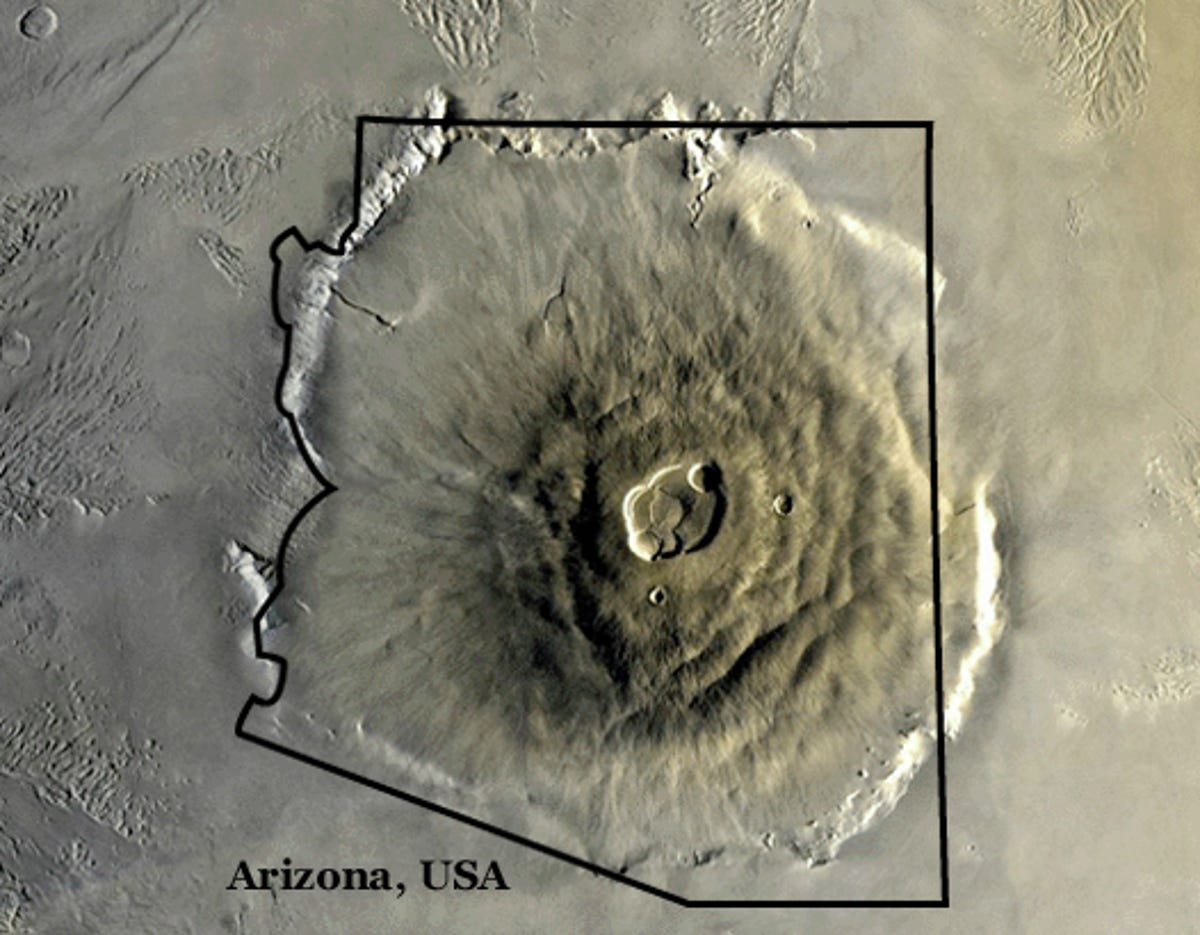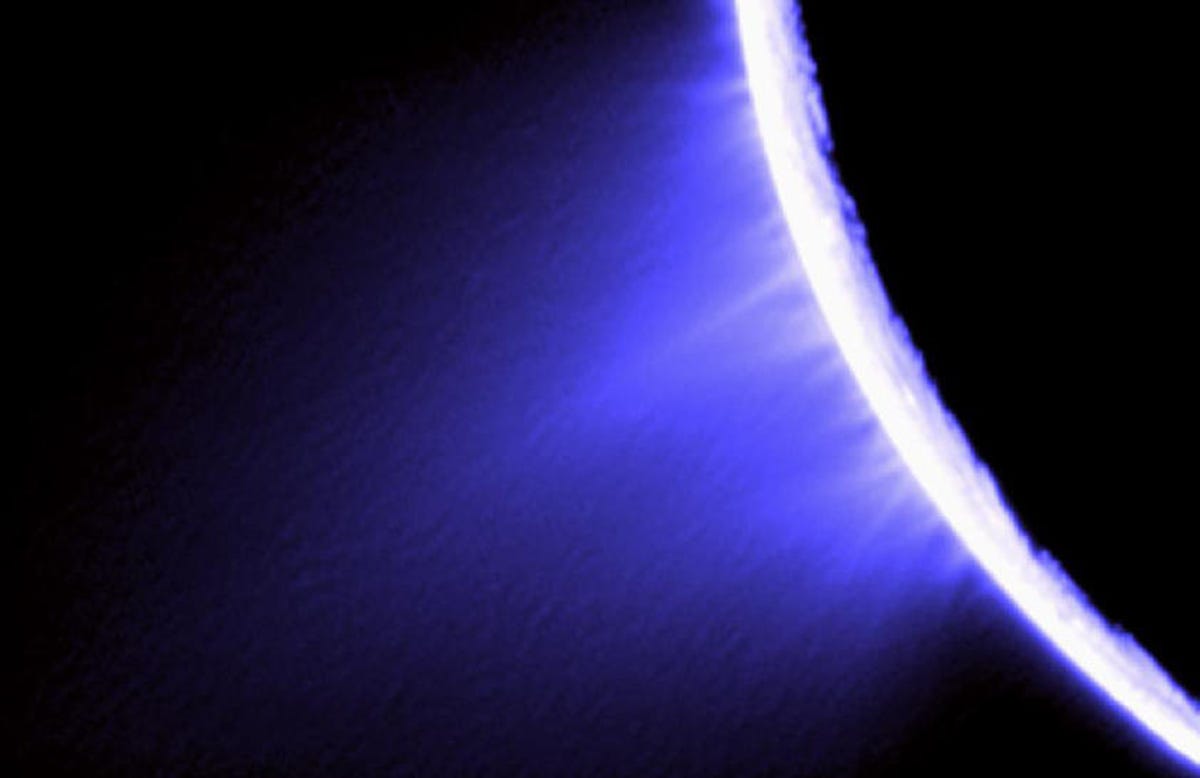A 23rd-century tourist guide to the galaxy
By 2200, Mars and Pluto could be on your bucket list. As NASA and Elon Musk make plans to visit the red planet, we've created a list of interplanetary and even interstellar travel adventures.

Climbing Olympus Mons, Mars
For adventurers in the 23rd century, only the biggest, boldest and most spectacular destinations will do.
For eons, humans were bound to a single planet. But the perfection of an electromagnetic drive, or EM drive, in the 2100s will usher in a new era of interplanetary and interstellar travel. Humans will finally be able to go boldly where no biological-based tourists have gone before. To prepare future generations for this awesome new age, we proudly present this speculative first draft of our "23rd Century Travel Guide to the Galaxy for Extreme and Casual Human Tourists."
Let's start with literally the biggest destination next door. Previous generations scrambled to the increasingly crowded summits of peaks like Everest and Denali. In the 2200s, new Martian bases developed by SpaceXtreme will allow interplanetary mountaineers to visit the geological top of the solar system by scaling the 25-kilometer tall (16 miles, or almost 85,000 feet) volcano, Olympus Mons. The largest volcano around isn't just high, it also takes up an area on the red planet roughly the same size as Arizona, which coincidentally happens to be one of the places on Earth that most resembles Mars.
Be sure to bring plenty of extra oxygen on this Martian hike, and watch out for any sunny-side slope lineae quicksand!
Originally published Feb. 19, 2016. Update, Feb. 26, 2019, 9:35 a.m. PT: Added more photos to the gallery.
Sailing methane seas on Titan
For centuries, sailors filled their lungs with refreshing salty sea air and felt alive. To really know your place in the 23rd-century universe, there will be nothing quite like the more, uh, acquired taste of setting sail on the odorific and flammable great methane lakes of Saturn's iconic moon Titan.
Don't forget to bring your pressurized diving suit on this expedition, because there's plenty to explore below the surface of Titan's seas, which reach depths of at least 500 feet. Not quite that adventurous? Don't worry, you can also plan to take a ride in NASA's old submarine after it's re-commissioned as a tourist vessel.
Lunar mining museum
The 23rd century's new age of "rocketpacking" tourists will be made possible thanks to 21st-century prospectors who will set out to mine the moon and near-Earth asteroids for resources and fuel. That's why the best first stops on any future interplanetary itinerary are the lunar gateway monument and mining museum. There you can witness the harvesting of key resources for space travel and, of course, fuel up for the next leg of your trip!
Floating above toxic Venus
If you're the kind of tourist looking to live on the edge, then a Venusian "float" trip will be the best way to stare certain death in the face in 2200. Float above our nearest neighbor's toxic clouds of sulphuric acid while enjoying the luxurious accommodations of a top-notch cloud city resort converted from the remains of the old HAVOC mission of the late 2100s.
Mars' Grand(er) Canyon
Mars may technically be smaller than Earth, but its biggest destinations tend to be really big. If the Grand Canyon was a bucket list essential of past centuries, then the much grander canyons of Valles Marineris will be an absolute must for any 23rd-century solar system tourist.
Just how big is it? Well, it spans about one-fifth of the entire distance around Mars, or roughly the same as stretching the length of the lower 48 United States. There's no Colorado River on Mars, though, so to really explore, you'll want to bring along your jetpack.
Racing on the salt flats of Ceres
For a brief moment in the 21st century, a few dreamers thought Ceres might be shining the bright headlights of an alien base at us. Now we know it's really the reflective sheen of salt flats that will offer the best land-speed racing in the solar system.
If you have a need for speed, pack up those vintage Lucas pod racers and hovercraft of all shapes and sizes (but not this kind) and make your way to the premiere destination in the asteroid belt. You'll be able to catch the best racers around while slurping down a delicious Ceresian salt-shake from the comfort of your smartsuit.
Orbiting resorts
Since at least the 1960s, we've been talking about building orbiting communities, resorts, or getaways from the apocalyptic mess on Earth. Fortunately, by 2200 we'll finally have a few decent ones up and running.
Just like taking a leisurely cruise was the way to have an adventure without missing any creature comforts in 2016, rotating around in a sleek Torus for a spell will be the 23rd-century way to travel and relax.
Superstorm chasing in Jupiter's atmosphere
By 2216, storm chasing the way it's done in the 21st century with big heavy trucks on country roads may seem passe. If you really want to see nature's fury up close, only an adventure above one of the solar system's biggest storms will do. Whether it's Jupiter's Great Red Spot or the cyclones of Saturn, NASA's windbot concept will help pave the way for manned pods that will let super-thrillseekers ride the winds of the gas giants in a crazy combination of hang gliding and storm chasing. Be sure to check all your systems and your training though, because if you can't stay aloft you'll surely be crushed by the intense pressures at the planets' lower altitudes.
A Europan cruise
Interplanetary travel in the 23rd century will be full of trade-offs. You can sail the beautiful seas of Titan, but you'll have to put up with its methane stench. You can ply the crystal clear waters of Europa, but unfortunately they're pitch black because they're encased in a layer of ice that blocks out the sun. At least if you opt for the Europan option, its dark waters are a little safer to illuminate since they're not flammable. As a bonus, by 2200, NASA will have abandoned a whole fleet of squid-style submarines there that you can cruise around in.

Enceladus' spray: The new Niagara Falls
Niagara Falls is great, but the height of 23rd-century romantic settings will be in a probe. You'll drift through the silent emptiness of space with Saturn's majestic rings in the background, when suddenly a mist becomes visible in the distance. Your probe drifts toward a picturesque plume shooting forth from the south pole of the moon Enceladus until it sprays your craft, breaking the silence while gently pushing you back out into the emptiness for another pass. Make your reservation for Valentine's Day 2216 soon!
Comet rodeo
A robot first landed on a comet in 2015. Although we didn't know it then, a new sport was born!
By 2200, aspiring and daring pilots will be landing on comets like the 23rd century equivalent of hobos riding the rails. The thrill-seekers among them will "rodeo" the comets. They'll try to nail a landing when the space rock is near perihelion, or its closest point to the sun, and hang on as long as possible as its steamy tail grows to its longest point and the comet faces the prospect of breaking up completely. The reward? Collecting a galactic bounty worth of space fuel.
Diamond prospecting on Saturn
What says forever better than a diamond? Well, how about traveling across the solar system to pluck a whole bunch of diamonds from the atmosphere of a gorgeous, ringed gas giant planet?
In the 23rd century, diamonds may become a little less valuable because anyone will be able to take a prospecting trip through Saturn's atmosphere to literally pluck them out of the sky. Still, it'll be one way to make a beautiful trip pay for itself.
Skiing Pluto
By the turn of the 21st century, skiers and snowboarders had pretty much conquered all the slopes on Earth. Naturally the dawn of interplanetary travel will lead them to the frozen reaches of the Kuiper Belt as they look for new places to shred. It's a safe bet that Pluto will provide, with its abundance of ice mountains, actual snow and even blue skies. Here's to eagerly anticipating some Plutonian pow-pow!
A FarFarOut rest stop
Beyond Pluto lies the long, cold journey through the Kuiper Belt on your way past the frozen wastelands of Boreas, formerly known as Planet X or Planet 9.
Fortunately there really is a restaurant at the end of the universe (or at least at the end of the solar system). By 2200, there could be several places to refuel and grab provisions on dwarf planets like FarOut, FarFarOut and the archaically named LikeTotallyGoneMan.
Dark side of the exoplanet
Proxima b is the closest planet to Earth not in our solar system. It was rumored to be home to an odd telepathic alien race, but if they ever existed they were likely driven away by the frequent solar flares from the red dwarf star Proxima Centauri.
Truly adventurous souls still search for life on the planet's far side, though. Because Proxima b is tidally locked with the same side always facing its star, many in the 23rd century believe hardy life forms may find a way to survive on its dark side, away from the deadly radiation blasts.
The most well-traveled concert ever
All the way back in the early 21st century, some forward thinkers sent a musical message into the cosmos, aimed for Luyten's Star.
Remarkably, the message was received and was, in fact, well received. By the 2200s travelers from around the galaxy began to visit the system and its magnificent concert halls to hear amazing renditions of the first trans-stellar musical composition.
Yes, there is a Tatooine
The final, far out destination on our itinerary (at least until wormhole travel is perfected) is the remarkable Kepler-16b. This comfortable planet is in a binary system just like Tatooine, the classic setting of the early space era 2-D film franchise Star Wars.
With so many travel options in our future, surviving to the 23rd century by simply uploading your consciousness to the cloud may not be nearly satisfying enough. To really enjoy experiences like skiing Pluto and watching the sun set twice on Kepler-16b, I think I'd be far more interested in just hitting the off switch on my aging genes ASAP.
Since this is just the second edition of our 23rd-century travel guide and we've got almost 200 years until the final edition needs to be finished, please tweet your ideas for possible additions to @EricCMack.

